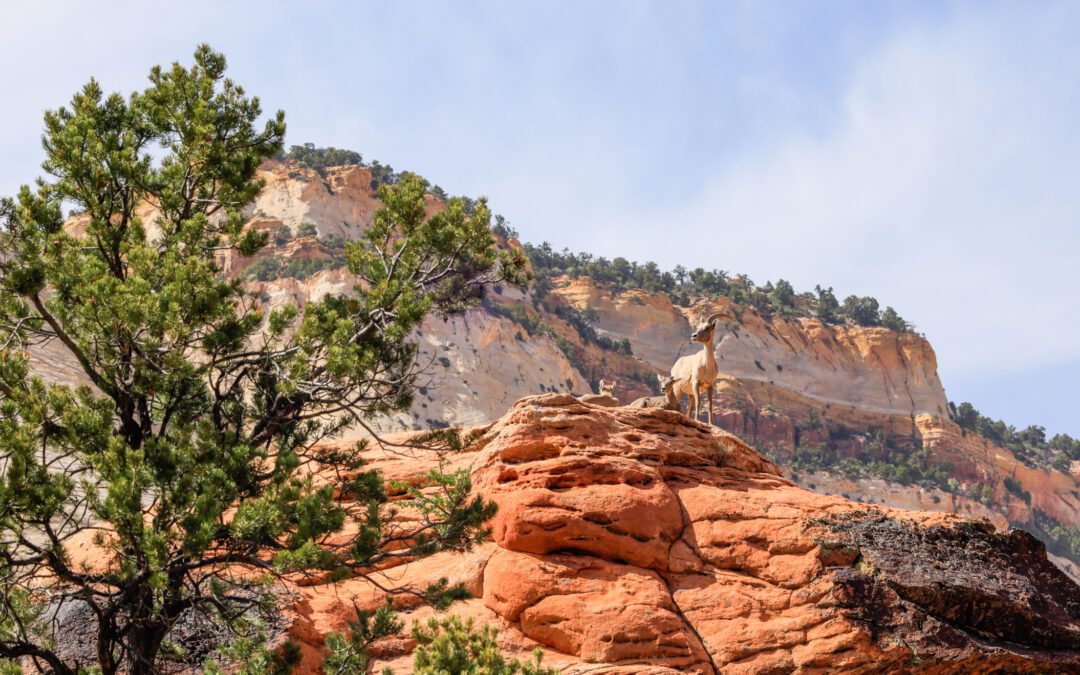At Utah Wild Sheep Foundation, our mission is to help put and keep sheep on Utah’s mountains. From habitat fragmentation and disease outbreaks to predation and human encroachment, the wild sheep of North America have historically faced significant threats to their population. In this article, we discuss the most common conservation methods used to preserve bighorn sheep populations in the American wilderness.
Bighorn Sheep Conservation Methods
Bighorn sheep, with their iconic horns and rugged beauty, have long captured the imaginations of nature enthusiasts and conservationists alike. These iconic creatures are native to North America and are particularly well-known in the United States. However, the bighorn sheep population has faced significant challenges over the years, including habitat loss and disease outbreaks. To ensure the survival of these incredible animals, a variety of conservation methods have been employed in the United States.
1. Habitat Restoration
One of the most crucial conservation methods for bighorn sheep is habitat restoration. Bighorn sheep thrive in rugged, mountainous terrain with ample vegetation. However, urban development, agriculture, and mining activities have encroached on their natural habitats. Conservationists are working to restore and protect these critical habitats, allowing bighorn sheep populations to recover and thrive.
2. Sheep Guzzlers
One of the most common projects in bighorn sheep conservation efforts is the building and maintenance of sheep guzzlers. Sheep guzzlers are water collection systems that collect and store rainwater for bighorn sheep in the area. Since water is scare in desert ecosystems, these sheep guzzlers can bring an essential population-sustaining to bighorn sheep herds in the wilderness.
3. Disease Management
Bighorn sheep are susceptible to diseases such as pneumonia, which can be devastating to their populations. The close proximity of domestic livestock can increase the risk of disease transmission. To mitigate this threat, efforts have been made to manage contact between bighorn sheep and domestic livestock, such as implementing grazing restrictions and maintaining physical barriers.
4. Translocation Programs
Translocation is the practice of moving bighorn sheep from one area to another to establish or bolster populations in suitable habitats. This method has been successful in reintroducing bighorn sheep to areas where they had been extirpated. It helps increase genetic diversity and provides insurance against local population declines. Some of these projects also include the introduction of sheep nurseries, which provide a protected area for bighorn sheep breeding. These sheep are later transplanted to broaden, strengthen, diversify, and increase health in existing bighorn sheep populations.
5. Monitoring and Research
Effective conservation relies on up-to-date data and research. Conservationists and wildlife biologists closely monitor bighorn sheep populations, studying their movements, behaviors, and health. This research helps identify threats and implement appropriate conservation strategies.
6. Predator Management
Natural predators like mountain lions and coyotes can pose a threat to bighorn sheep, particularly to lambs. In some cases, predator management programs have been implemented to reduce predation and increase lamb survival rates, which ultimately contribute to population growth. These are another reason nurseries are important to the sheep conservation effort, as these contained areas have better protection against bighorn sheep predators.
7. Public Education and Awareness
Raising public awareness about bighorn sheep conservation is another important conservation effort. When people understand the challenges these animals face, they are more likely to support conservation efforts by organizations such as the Utah Wild Sheep Foundation. Education campaigns and outreach programs aim to inform the public about the importance of bighorn sheep and the need to protect their habitats.
8. Legal Protections
Federal and state laws, such as the Endangered Species Act, provide legal protections for bighorn sheep and their habitats. These laws prohibit activities that could harm bighorn sheep or their habitats, ensuring that conservation efforts are backed by the force of law.
9. Collaboration and Partnerships
Conservation is a collaborative effort that often involves multiple stakeholders, including government agencies, non-profit organizations, and local communities. By working together, these groups can pool resources, share expertise, and implement effective conservation strategies. For Utah Wild Sheep Foundation, some of our most important partnerships are those with our Utah WSF Members, who help to financially support important sheep conservation efforts like those above, as well as, often, providing the boots-on-the-ground support in efforts such as relocation and sheep guzzler maintenance. If you’re interested in supporting bighorn sheep conservation efforts in Utah, we encourage you to become a member today or consider contributing to these efforts by making a donation.
Final Thoughts
The conservation of bighorn sheep in the United States is a complex and multi-faceted effort. It requires a combination of habitat restoration, disease management, translocation programs, predator management, and more. With dedicated efforts and continued support, we can ensure that future generations will continue to admire the majesty of bighorn sheep in their natural habitats.

